5ps Continuous Photo Example 5fps Continuous Photo Example
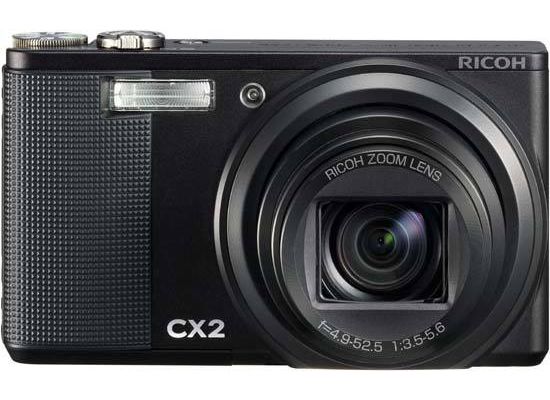
Introduction
The Ricoh CX2 is a new compact super-zoom camera, offering a 10.7x, 28-300mm zoom lens in a body less than 3cms thick. Successor to the 6-month old CX1 model, the Ricoh CX2 principally increases the focal range from 200mm to 300mm and the continuous shooting speed from 4fps to an impressively quick 5fps at full resolution. Other improvements include the addition of Pre-AF and Continuous AF focus modes, High-Contrast B&W, Discreet and Miniaturize scene modes, face recognition to the Easy shooting mode, and an AUTO option for the Dynamic Range feature. Otherwise the CX2 is fundamentally the same as its predecessor, with a 9 megapixel CMOS sensor, dynamic range of 12 EV, and Dynamic Range mode which takes two photos at different exposures and combines them to create a single image with expanded dynamic range. Multi-target Auto Focus takes seven consecutive images with different focal distances, allowing you to choose the image that you prefer, while the Multi-Pattern Auto White Balance mode detects different light sources in the scene and sets the correct white balance for each one. The Ricoh CX2 also features the same 3 inch HVGA LCD screen with 920K dots, Smooth Imaging Engine IV image processing engine, electronic level to help ensure straight horizons, an Easy shooting mode aimed at beginners, CCD-shift vibration correction system to help avoid camera-shake, face recognition and 1cm macro mode. Retailing for exactly the same price as the CX1, £299 in the UK, we find out if the Ricoh CX2 is worth considering.
Ease of Use
The design of the Ricoh CX2 is virtually identical to the previous CX1 model, so a lot of comments that we made about that camera will be repeated here. The CX2 is marginally heavier at 185g and thicker at 29.4 mm to accommodate the new 10.7 lens, but otherwise measures the same (101.5 mm (W) x 58.3 mm (H)) and looks almost identical. This is a compact digital camera that easily fits in the palm of your hand, and you certainly won't notice carrying it in a trouser/shirt pocket or a handbag. The CX2 is available in either silver or a more serious black - Ricoh provided the latter for our review. It retains the rather understated, retro look of previous R-series cameras. As soon as you pick it up, the Ricoh CX2 feels as solidly made, refined and purposeful as its predecessors. The main external differences between the CX2 and the CX1 are purely cosmetic - there's now a textured plastic handgrip area on the front instead of the previous smooth area, and the bottom of the lens mounting area is cut off in line with the bottom of the camera, which looks rather strange.
One of the main changes to the Ricoh CX2 is its new 10.7x zoom lens. This expands the focal range from an already versatile 7x, 28-200mm zoom range to an even more handy 28-300mm, a great feat of engineering in such a small camera and one which brings Ricoh into the recently popular 10x/12x "travel zoom" category. When the lens is fully extended, the camera measures over 8cm in depth, but thankfully it retracts fully back into the body when it is turned off. The 28-300mm range is incredibly versatile, covering everything from wide-angle landscapes to close-up action photos. The maximum apertures have suffered slightly, now being f/3.5 at wide-angle and f/5.6 at telephoto (compared to f/3.3 and f/5.2 on the CX1), but its a worth-while trade-off for that extra 100mm of zoom. Helpfully the zoom mechanism becomes quicker as you progress through the range, a neat feature that really cuts down on waiting for the camera to do your bidding.
The Ricoh CX2 only has 10 external controls in total, leaving plenty of room for the large 3 inch LCD screen that dominates the back of the camera. The CX2's screen has a commendably high resolution of 920K dots, and it certainly shows, being noticeably sharper and brighter than cameras with standard 230K dot screens. Both text and images really come alive on a simply breath-taking display that's one of the best of any camera that we've ever reviewed. There's a DSLR-like mode dial on top of the camera which lets you select from the Camera, DR, Continuous, Easy, Scene and Movie options, plus two settings called MY1 and MY2 which allow you to configure the CX2 for different uses and provide quick access to each configuration (the camera remembers the settings when it's turned off). The Easy shooting mode is aimed at beginners. The only options that can be changed when the CX2 is set to Easy mode is the Pic Quality/Size, and by pressing the Fn button, turning backlight compensation on. Note that the camera also returns to its default settings in Easy Mode. It's especially useful for the less experienced photographers in your family, or for asking other people to take photos of you when you're on vacation, especially now that Ricoh have added face recognition.
The Dynamic Range double shot mode is one of the Ricoh CX2's star attractions, taking advantage of the CMOS sensor to record images with much greater dynamic range than most compacts. When the Ricoh CX2 is in DR mode it takes two images with different exposures, and then records a single image that combines the properly exposed parts of each one. There are four DR strengths - Very Weak, Weak, Medium and Strong - plus an Auto setting if you're unsure which is the best setting. You can also choose to take a DR and Normal image at the same time (both are saved to the memory card), useful for quickly comparing the effect.
In practice this new mode works really well, resulting in images that have noticeably more dynamic range that those shot in the Normal mode, and far surpassing most other compact cameras. If you want to shoot images that retain detail in both the highlight and shadow areas, then the Ricoh CX2 is a great choice. You can see the results of using the the different EXR modes for yourself on the Image Quality page. There is a side-by side comparison of the Normal and four different DR modes, with links to the original full size images. There is one main drawback though; the DR images have noticeably less saturated colours than the Normal version, which more accurately matches the scene.
There are three new scene modes of particular interest. High-contrast B&W shoots images with higher contrast and more grain than the normal B&W mode, while the Miniaturize mode shoots scenes with the top and bottom areas of the image blurred. The new Discreet mode turns off the flash, AF Assist lamp and all operational sounds, very convenient when shooting in museums or anywhere that you don't want to draw attention to yourself.
Multi-target Auto Focusing is another intriguing feature, although it doesn't quite live up to expectations. The CX2 takes 7 consecutive images at different focal distances and allows you to choose the best one. It's quite useful for macro work when it's tricky to judge the exact focus point, although the combination of the CX2's high-res screen and manual focus mode already makes this much easier than on most other compact cameras. You can potentially also use the Multi-target Auto Focusing mode to shoot the 7 images, then combine them together in Photoshop or a similar application to create a single image with wider focus than a single image allows. In practice, however, the CX2 tends to always focus on a particular part of the scene and doesn't differentiate enough between the 7 shots to really make this technique effective.
Multi-pattern auto white balance is useful for scenes with mixed lighting - daylight and flash, or fluorescent and daylight, for example. Instead of just taking an average reading from the whole scene, which inevitably gets the white balance wrong for the secondary light source, the CX2 breaks the image down into small areas and analyzes and sets the white balance for each one. In practice it produces a subtle but noticeable effect that is particularly useful for capturing more natural portraits when using flash.
By default the Adjust button on the rear of the camera , or more accurately the Adjust four-way joystick - allows you to quickly adjust 5 different settings that are commonly used. Press it to alter Exposure Compensation, White Balance, ISO Speed, Quality and the AF/AE Target Selection mode. Even better, the Adj. menu is customisable - you can choose what the first four settings do, allowing you to control exactly what you want quick access to. The Adjust button also doubles up as the OK button to select options and it sets the Macro and Flash options by pressing left and right - there's another button underneath to access the Main menu system. Ricoh have also included a customisable Function (Fn) button, which can be optionally used to control one of 7 settings - AE Lock is a good choice. In theory it all sounds like a convoluted recipe for disaster, but in practice it works well, allowing quick access to most of the major functions of the camera without having to scroll through the menu system.
The Ricoh CX2 is a point and shoot camera with no advanced exposure controls. Having said that, the CX2 does have a few notable tricks up its sleeve. The AF/AE Target Selection mode allows you to shift the target for both auto focus and automatic exposure without having to move the camera, useful for tripod-mounted macro subjects, but also available in any shooting mode. The [F1:1] Picture Size, as previously seen on the GX100 and GR Digital II cameras, allows you to record your photos in square format (at 6 megapixels), similar to some medium format cameras, offering a new perspective on the world. The Fix Minimum Aperture function forces the camera to shoot at the smallest aperture available, which gives a greater depth of field in the resulting photograph.
The electronic leveler is an innovative feature borrowed from the GR Digital II and GX200. This helps to ensure level shots, both in landscape and portrait mode. You can view the horizontal indicator on the LCD monitor to ensure that shots are aligned horizontally. If you can't see the LCD screen in very bright sunlight, then the camera can also be set to make a sound to indicate a level horizon. It doesn't sound like a big deal in theory, but in practice it really helps to make the horizons in all your wide-angle shots perfectly level. Another very welcome feature is the ability to set the flash intensity, which can be adjusted in 1/3 EV steps across the -2.0EV to +2.0EV range, which gives you precise control over the flash output.
The Ricoh CX2 features an anti-shake system called Camera Shake Correction - turn it on in the Main menu and the Ricoh CX2 automatically compensates for camera shake, which is a slight blurring of the image that typically occurs at slow shutter speeds. You don't notice that the camera is actually doing anything different when anti-shake is turned on, just that you can use slower shutter speeds than normal and still take sharp photos. Ricoh seem to have realised the importance of this system, as it is turned on by default, and thankfully leaving the anti-shake system on didn't negatively affect the battery-life, with the camera managing over 275 shots before the battery needed to be recharged (comparable to the CX1).
The face recognition feature offered by the Ricoh CX2 has at last been improved, now recognising a maximum of 8 faces (up from 4 on the CX1) and focusing a little more quickly than before. Ricoh have still chosen to make it a specific scene mode, rather than a general setting that applies to whichever shooting mode is currently selected, which rather limits its usefulness, although they have at least now added it to the Easy shooting mode. The new Pre-AF and Continuous AF functions are more useful, helping you to quickly and accurately focus on the subject. As its name suggests, Pre-AF sets the focus before you've even half-pressed the shutter button, while Continuous AF automatically adjusts the focus to match the subject movement, making the CX2 better suited to action photography than its predecessor.
The main menu system on the Ricoh CX2 is straight-forward to use and is accessed by pressing the Menu button on the rear of the camera. There are two main menus, Shooting and Setup. Quite a lot of the camera's main options, such as image size, sharpness, metering mode and continuous mode, are accessed here. Despite offering 10 onscreen choices at once, the sharp display ensures that the various options and icons are clear and legible. If you have never used a digital camera before, or you're upgrading from a more basic model, reading the comprehensive and easy-to-follow manual before you start is a must. Thankfully Ricoh have chosen to supply it in printed format, rather than as a PDF on a CD, so you can also carry it with you.
Ricoh have a long history of creating responsive cameras, and the CX2 certainly extends that tradition. The start-up time from turning the Ricoh CX2 on to being ready to take a photo is quick at around 1 second, and it only takes just over 1.5 seconds to zoom from the widest focal length to the longest, impressive given the focal range. Focusing is very quick in good light and the camera happily achieves focus most of the time indoors or in low-light situations, even at the tele-photo end of the lens. It takes about 0.5 second to store a JPEG image, allowing you to keep shooting as they are being recorded onto the memory card - there is no LCD blackout between each image. In the default Continuous mode the camera takes 5 frames per second at the highest JPEG image quality, which is excellent for this class of camera. In addition M-Continuous Plus (9M) takes 15 images at 5ps and M-Continuous Plus (2M) takes 30 images in one second, and you can also shoot at 30 frames/sec at 2 megapixels and an ultra-fast 120 frames/sec at 640x480 pixels. In all four modes, the consecutively shot images are recorded as a single MPO file (a file format with multiple still images in a single file).
Once you have captured a photo, the Ricoh CX2 has an above average range of options when it comes to playing, reviewing and managing your images. You can instantly scroll through the images that you have taken, view thumbnails (81 onscreen at once!), zoom in and out up to 16x magnification, view slideshows with audio, set the print order, delete, trim, rotate, protect and resize an image. There's a Recover File option which will rescue deleted images, just so long as you don't turn the camera off first. Level Compensation allows you to correct the contrast and tone of an image after it has been taken, and White Balance Compensation the white balance. The Skew Correction function alters any photo that was taken at an angle so it appears as if it were taken directly in front of you.
You can "flag" an image, which essentially allows you to choose up to three files and then immediately display them by pressing the Fn button during playback, and images are automatically rotated during playback to fit the current orientation of the camera. The Display button toggles detailed settings information about each picture on and off, such as the ISO rating and aperture / shutter speed, and there is a small histogram available during both shooting and playback. The White Saturation display mode during image playback indicates over-exposed highlights by flashing those areas on and off. When taking a photo, pressing the Display button toggles between the detailed information, the histogram and gridlines to aid composition.
Image Quality
All of the sample images in this Review were taken using the 9 megapixel Fine JPEG setting, which gives an average image size of around 3Mb.
The Ricoh CX2 produced images of excellent quality during the review period. The Ricoh CX2's main drawback in terms of image quality is noise, with ISO 400 showing some noise, blurring of detail and slight colour desauration. The noise and loss of detail get progressively worse as you go from ISO 400 to ISO 800 and finally the fastest 1600 setting.
The Dynamic Range mode works really well, resulting in images that have noticeably more dynamic range that those shot in the Normal mode, and far surpassing most other compact cameras. If you want to shoot images that retain detail in both the highlight and shadow areas, then the Ricoh CX2 is a great choice. There is one main drawback though; the DR images have noticeably less saturated colours than the Normal version, which more accurately matches the scene.
The Ricoh CX2 handled chromatic aberrations very well with limited purple fringing effects appearing only in high contrast situations. The 9 megapixel images were just a little soft straight out of the camera at the default sharpen setting of Normal and either require some further sharpening in an application like Adobe Photoshop, or you should set the in-camera sharpening to Sharp. The night photograph was OK, with the maximum shutter speed of 8 seconds allowing you to capture just enough light for most situations.
Macro performance is a stand-out highlight, allowing you to focus as close as 1cm away from the subject, although there is a lot of lens distortion and shadowing at such a close distance. Anti-shake works very well when hand-holding the camera in low-light conditions or when using the telephoto end of the zoom range. The built-in flash worked well indoors, with no red-eye and good overall exposure.
Noise
There are 6 ISO settings available on the Ricoh CX2. Here are some 100% crops which show the noise levels for each ISO setting.
| ISO 80 (100% Crop) | ISO 100 (100% Crop) |
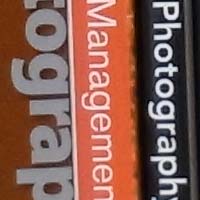 |  |
| ISO 200 (100% Crop) | ISO 400 (100% Crop) |
 |  |
| ISO 800 (100% Crop) | ISO 1600 (100% Crop) |
 |  |
Focal Range
The Ricoh CX2's 10.7x zoom lens offers a very versatile focal range, as illustrated by these examples:
| 28mm | 300mm |
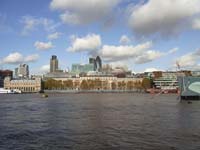 |  |
Dynamic Range
When the Ricoh CX2 is in DR mode (Dynamic Range double shot) it takes two images with different exposures, and then records a single image that combines the properly exposed parts of each one. You can also choose to take a DR and Normal image at the same time (both are saved to the memory card). Here is an example which was shot with Normal and then the four DR modes (Very Weak, Weak, Medium and Strong), with links to the original full size images.
| Normal | Dynamic Range - Very Weak |
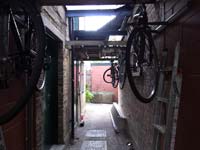 | 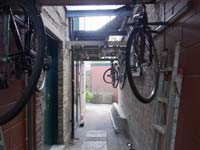 |
| Full Size Image | Full Size Image |
| Dynamic Range - Weak | Dynamic Range - Medium |
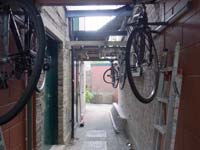 | 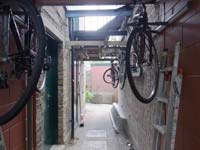 |
| Full Size Image | Full Size Image |
| Dynamic Range - Strong | |
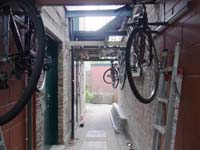 | |
| Full Size Image |
Sharpening
Here are two 100% crops which have been Saved as Web - Quality 50 in Photoshop. The right-hand image has had some sharpening applied in Photoshop. The out-of-the camera images are a little soft at the default sharpening setting of Normal. You can change the in-camera sharpening level to one of the preset levels (Sharp, Normal or Soft) if you don't like the default look.
| Original (100% Crop) | Sharpened (100% Crop) |
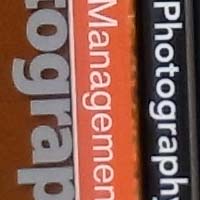 | 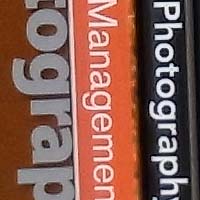 |
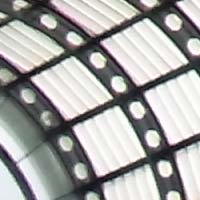 | 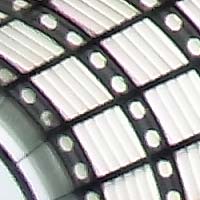 |
File Quality
The Ricoh CX2 has 2 different image quality settings available, with Fine being the highest quality option. Here are some 100% crops which show the quality of the various options, with the file size shown in brackets.
| 9M Fine (3.19Mb) (100% Crop) | 9M Normal (1.84Mb) (100% Crop) |
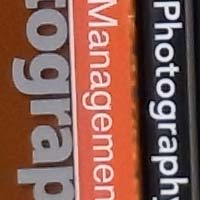 | 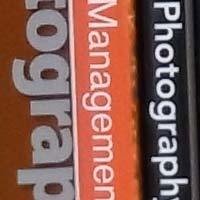 |
Chromatic Aberrations
The Ricoh CX2 handled chromatic aberrations excellently during the review, with very limited purple fringing present around the edges of objects in certain high-contrast situations, as shown in the example below.
| Example 1 (100% Crop) |
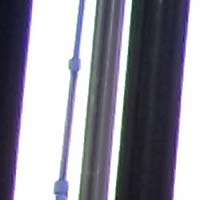 |
Macro
The Ricoh CX2 offers a Macro setting that allows you to focus on a subject that is just 1cm away from the camera when the lens is set to wide-angle. The first image shows how close you can get to the subject (in this case a compact flash card). The second image is a 100% crop.
| Macro Shot | 100% Crop |
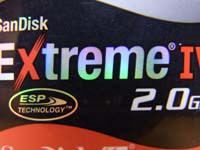 | 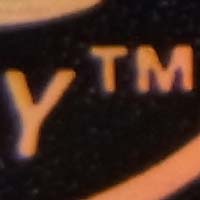 |
Flash
The flash settings on the Ricoh CX2 are Auto flash, Red-eye Flash, Flash On, Flash Synchro and Flash Off. These shots of a white coloured wall were taken at a distance of 1.5m.
| Suppressed Flash - Wide Angle (28mm) | Forced Flash - Wide Angle (28mm) |
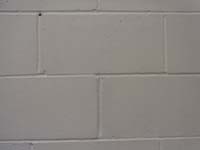 | 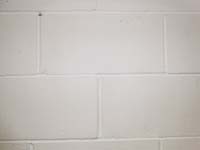 |
| Suppressed Flash - Telephoto (300mm) | Forced Flash - Telephoto (300mm) |
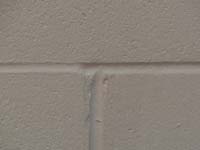 | 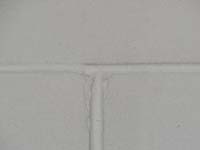 |
And here are some portrait shots. As you can see, neither the Flash On or the Red-eye Flash settings caused any red-eye.
| Forced Flash | Forced Flash (100% Crop) |
 | 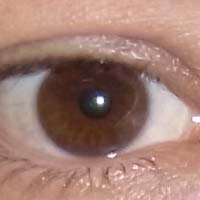 |
| Red-eye Reduction Auto | Red-eye Reduction Auto (100% Crop) |
 | 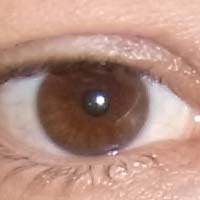 |
Night
The Ricoh CX2's maximum shutter speed is 8 seconds via the Time Exposure main menu option, which is fairly good news if you're seriously interested in night photography. The shot below was taken using a shutter speed of 8 seconds at ISO 80. I've included a 100% crop of the image to show what the quality is like.
| Night Shot | Night Shot (100% Crop) |
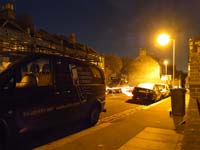 | 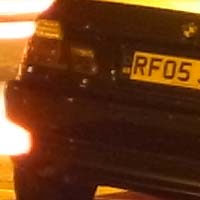 |
Anti Shake
The Ricoh CX2 has an anti-shake mechanism, which allows you to take sharp photos at slower shutter speeds than other digital cameras. To test this, I took 2 handheld shots of the same subject with the same settings. The first shot was taken with anti shake turned off, the second with it turned on. Here are some 100% crops of the images to show the results. As you can see, with anti shake turned on, the images are much sharper than with anti shake turned off. This feature really does seem to make a difference and could mean capturing a successful, sharp shot or missing the opportunity altogether.
| Shutter Speed / Focal Length | Anti Shake Off (100% Crop) | Anti Shake On (100% Crop) |
| 1/9th / 28mm | 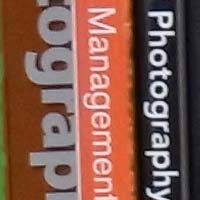 | 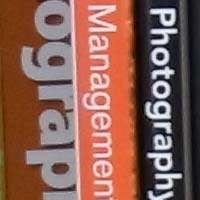 |
| 1/4th / 300mm | 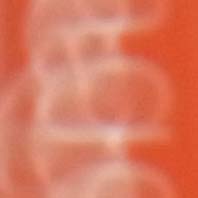 | 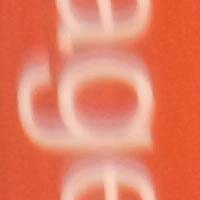 |
Sample Images
This is a selection of sample images from the Ricoh CX2 camera, which were all taken using the 9 megapixel Fine JPEG setting. The thumbnails below link to the full-sized versions, which have not been altered in any way.
Sample Movie & Video
This is a sample movie at the quality setting of 640x480 at 30 frames per second. Please note that this 19 second movie is 27.9Mb in size.
Product Images
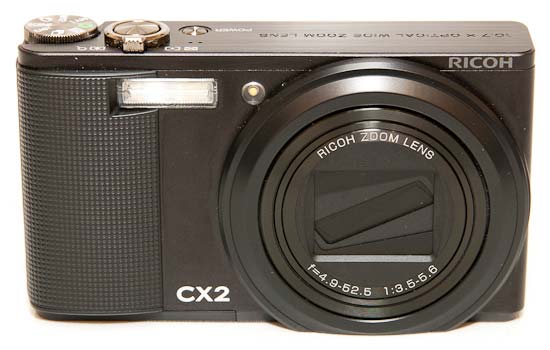 |
| Front of the Camera |
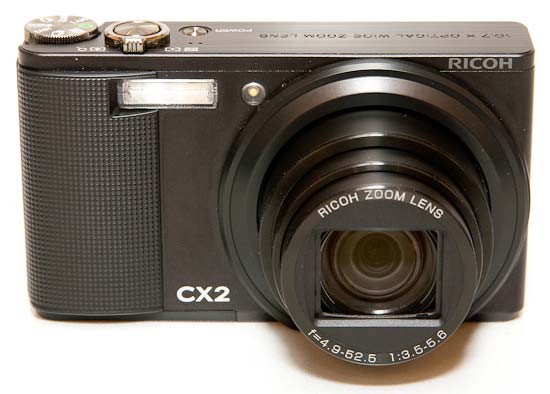 |
| Front of the Camera / Lens Extended |
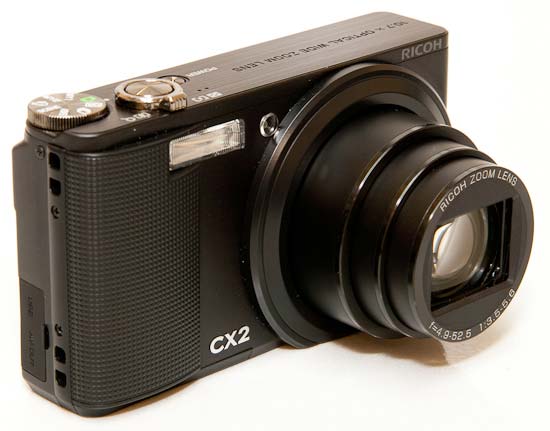 |
| Isometric View |
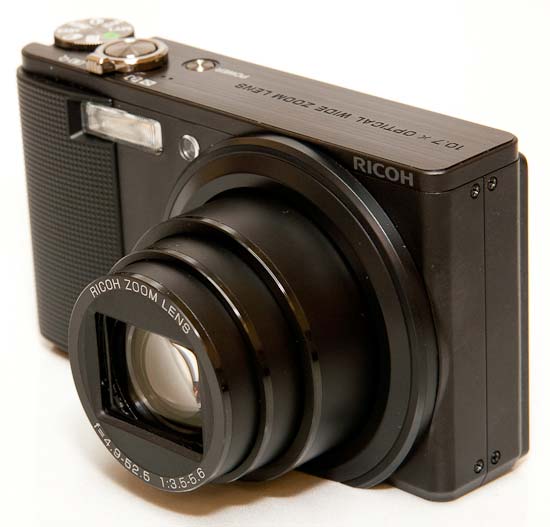 |
| Isometric View |
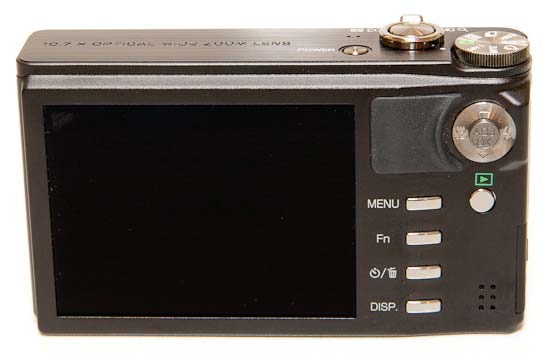 |
| Rear of the Camera |
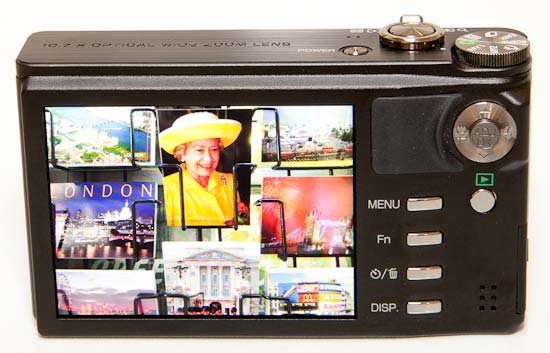 |
| Rear of the Camera / Image Displayed |
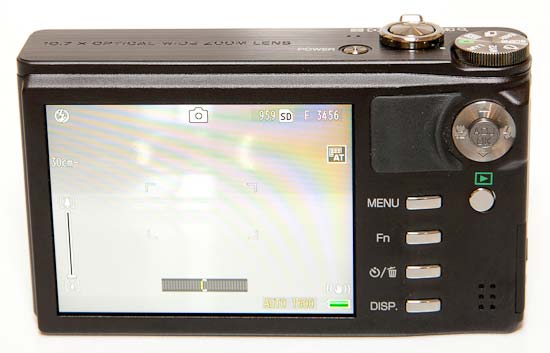 |
| Rear of the Camera / Turned On |
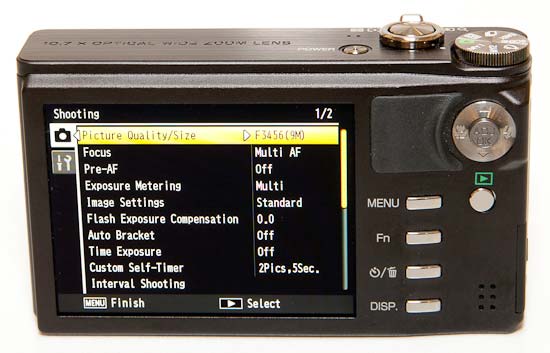 |
| Rear of the Camera / Main Menu |
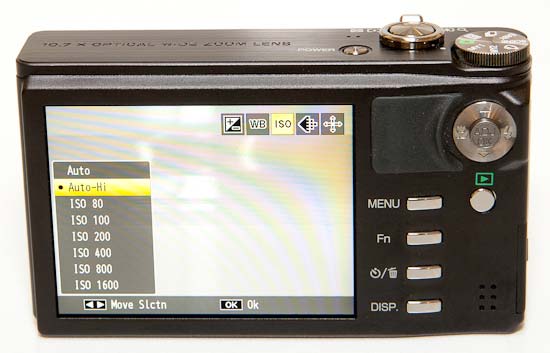 |
| Rear of the Camera / Adjust Menu |
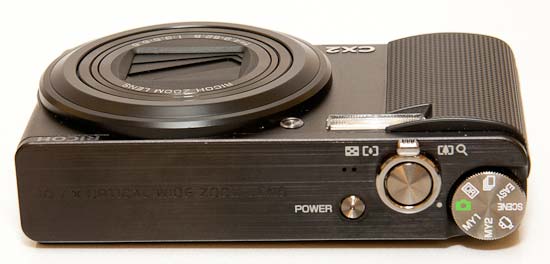 |
| Top of the Camera |
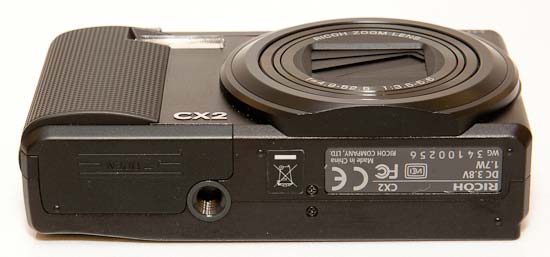 |
| Bottom of the Camera |
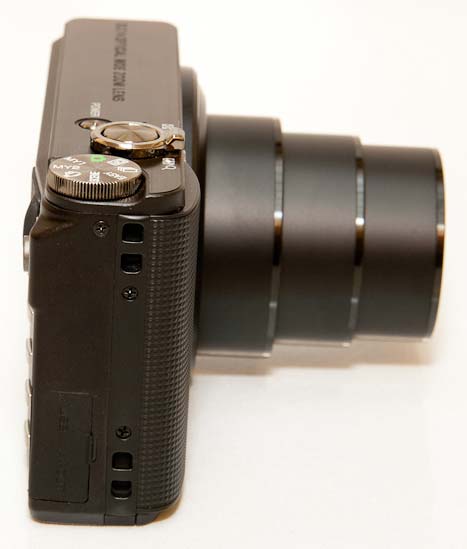 |
| Side of the Camera |
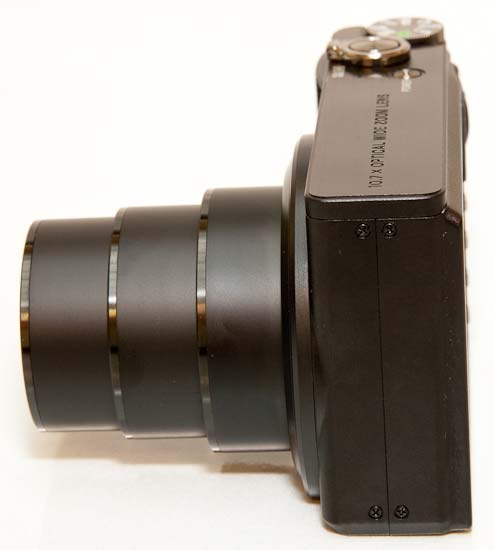 |
| Side of the Camera |
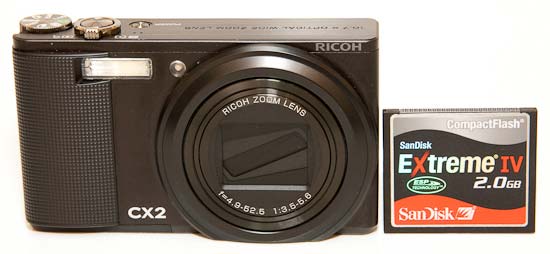 |
| Front of the Camera |
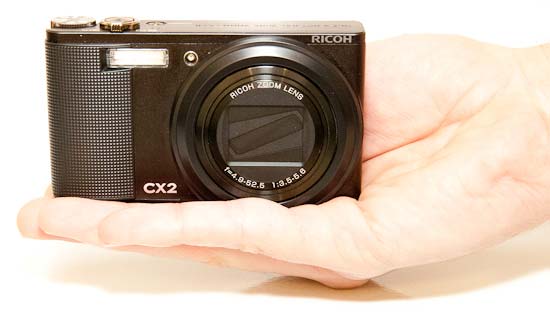 |
| Front of the Camera |
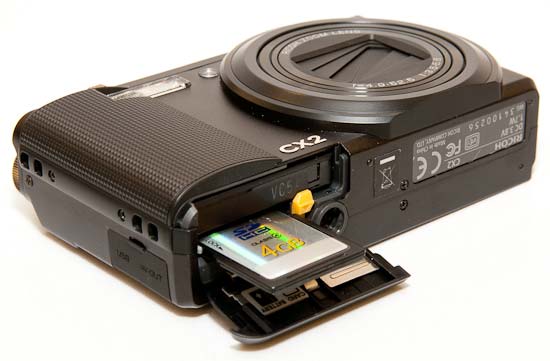 |
| Memory Card Slot |
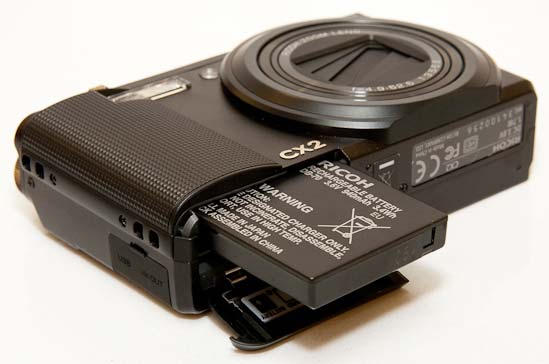 |
| Battery Compartment |
Conclusion
The Ricoh CX2 adds a couple of real improvements and a few additional frills to an already proven design. CX1 owners may feel aggrieved given the aggressively short timescale between releases, but for the rest of us the CX2 demands and deserves our full attention.
The new 10.7x, 28-300mm lens is the star of the show, remarkably housed inside the same compact body as the CX1's 7x zoom. This propels the CX2 into the same travel-zoom market as the excellent Panasonic TZ series, affordable Samsung WB-series, Canon PowerShot SX200 IS, Olympus Mju 9000 and numerous other competitors. While it doesn't offer the high-def video of most of those cameras, the CX2 does have a lot more "serious" photography features, despite being first and foremost a point-and-shoot camera. The very effective DR mode greatly expands the dynamic range of your full resolution images, increasing detail in the shadow and highlight areas so that the picture more accurately reflects what you can see, although images have a slightly washed-out look when directly compared to shots taken in the Normal shooting mode.
Multi-pattern auto white balance and Multi-target Auto Focusing are effective features that sit happily alongside the likes of the electronic leveler, ability to change the flash intensity, customisable Function button and Easy mode for beginners, all of which help to make the CX2 a great camera to use for beginners and prosumers alike. Even better is the 5fps continuous shooting speed, which is much faster than most compacts in the same price bracket, with faster rates possible if you're happy to drop the image resolution, and the high-res LCD screen is still simply breath-taking. Add the handy Pre-AF and Continuous AF focus modes, and new High-Contrast B&W, Discreet and Miniaturize scene modes, and the CX2 is simply a more capable camera than its predecessor.
Ricoh have also maintained the big step forward that they took with the CX1 in terms of image quality. We criticized earlier models for producing noisy images at relatively slow ISO speeds, but the 9 megapixel CMOS sensor has definitely improved things here, with a now usable ISO range of 80-800, and even the fastest ISO 1600 setting OK for small prints and web images. Chromatic aberrations are still thankfully only noticeable by their absence, the anti-shake and flash systems work effectively, and there's lots of scope to tweak the look of the CX2 photos to suit your particular needs.
Price is still something of an issue - £299 is a lot to ask for a 9 megapixel point-and-shoot camera - but Ricoh have at least frozen the price at the same level as the CX1, despite recent hikes in currency exchange rates. In essence the Ricoh CX2 remains a great pocket camera for the keen photographer, despite the continued lack of manual controls, and is still worthy of our coveted Highly Recommended award.
| Ratings (out of 5) | |
|---|---|
| Design | 4.5 |
| Features | 4.5 |
| Ease-of-use | 4.5 |
| Image quality | 4.5 |
| Value for money | 4 |
Review Roundup
Reviews of the Ricoh CX2 from around the web.
It's only been a few months since I reviewed the Ricoh CX1. Ricoh has never been the most prolific of camera manufacturers, only launching a couple of new models a year and keeping its older designs in production long after faster-moving brands would have discontinued them. It's rather surprising then that less than six months after the launch of the CX1, Ricoh has followed it up with today's camera, the new CX2.
Read the full review »
Normally, the usual paragraph reserved for describing the outward appearance of a Ricoh camera is a very short one. Fortunately, both the CX1 and the CX2 buck the trend as they're a bit stylish. The metal exterior has a pleasant, slightly mottled texture that makes it easy to hold in one hand without the need for a wrist strap plus there's now an extra textured grip on the front that sets it apart from the CX1. It's available in three colours: silver, black and a two-tone pink/grey combination.
Read the full review »
Specifications
| No. of Effective Pixels (Camera) | Approximately 9.29 million pixels | |
| Image Sensor | 1/2.3-inch CMOS (total pixels: approx. 10.29 million pixels) | |
| Lens | Focal length | f=4.9-52.5mm (equivalent to 28-300 mm for 35 mm film cameras. With Step Zoom set, option of eight fixed lengths: 28 mm, 35 mm, 50 mm, 85 mm, 105 mm, 135 mm, 200 mm, and 300 mm) |
| F-aperture | F3.5 (Wide) - F5.6 (Telephoto) | |
| Shooting Distance | Normal shooting: Approx. 30 cm - infinity (Wide), approx. 1.5 m - infinity (Telephoto) (from the front of the lens) Macro: Approx. 1 cm - infinity (Wide), approx. 28 cm - infinity (Telephoto), approx. 1 cm - infinity (Zoom Macro) (from the front of the lens) | |
| Lens Construction | 10 elements in 7 groups (aspheric lens: 4 elements and 5 surfaces) | |
| Zoom Magnification | Optical: 10.7x zoom (equivalent to 28-300 mm focal length for 35 mm cameras) Digital: 4.8x up to 51.4x (equivalent to 1440 mm) when used with optical zoom Auto Resize: 5.4x*1 up to 57.8x*1 (equivalent to 1620 mm) when used with optical zoom | |
| Focus Mode | Multi AF (contrast AF method) / Spot AF (contrast AF method) / Continuous AF / Multi-Target AF / Manual Focus / Fixed Focus (Snap) / Infinity (AF auxiliary light) | |
| Image stabilizer | Image sensor shift method image stabilizer | |
| Shutter Speed*2 | Still image | 8, 4, 2, 1 - 1/2000 sec. |
| Movie | 1/30 - 1/2000 sec. | |
| Continuous Shooting | Continuous shooting speed*3 | approx.5 frames/sec. (F3456, F3:2, F1:1 shooting time; shooting speed after 30 pictures is approx. 3 frames/sec.) |
| Continuous shooting capacity | 999 pictures | |
| Exposure Control | Exposure Metering Mode | Multi (256 segments), Center Weighted Light Metering, Spot Metering |
| Exposure Mode | Program AE | |
| Exposure Compensation | Manual Exposure Compensation +/-2.0EV (1/3EV Steps), Auto Bracket Function (-0.5EV, ±0, +0.5EV) | |
| ISO Sensitivity (Standard Output Sensitivity) | AUTO, AUTO-HI, ISO80 / ISO100 / ISO200 / ISO400 / ISO800 / ISO1600 | |
| White Balance Mode | AUTO / Multi-Pattern AUTO / Outdoors / Cloudy / Incandescent / Incandescent 2 / Fluorescent / Manual, White Balance Bracket Function | |
| Flash | Built-in flash mode | Auto (during low light and when the subject is backlit), Red-eye-Reduction, Flash On, Slow Synchro, Flash Off |
| Built-in flash range | Approx. 20 cm - 3.0 m (Wide), approx. 28 cm - 4.0 m (Telephoto) (ISO Auto/ISO 800, from the front of the lens) | |
| Flash compensation | +/-2.0EV (1/3EV Steps) | |
| Monitor | 3.0-inch Transparent LCD (approx. 920,000 dots) | |
| Shooting Mode | Auto Shooting Mode / Easy Shooting Mode / Dynamic Range Double Shot Mode / Continuous Shooting Modes (Continuous, M-Continuous Plus, Ultra-High-Speed Continuous) / Scene Modes (Portrait / Sports / Night Portrait / Landscape / Nightscape / High Sensitivity / Zoom Macro / High-Contrast B&W / Miniaturize / Skew Correction / Text) / My Setting Mode / Movie Mode | |
| Picture Quality Mode*4 | F (Fine) / N (Normal) | |
| No. of Pixels Recorded | Still image/multi-picture | [4:3] 3456 x 2592, 3072 x 2304, 2592 x 1944, 2048 x 1536, 1728 x 20%96 (M-Cont Plus), 20%80 x 960, 640 x 480 [3:2] 3456 x 2304 [1:1] 2592 x 2592 |
| Movie | 640 x 480, 320 x 240 | |
| Text | 3456 x 2592, 2048 x 1536 | |
| Recording Media | SD memory card (32, 64, 20%8, 256, 520% MB, 1GB, 2GB), SDHC memory card (4GB, 8GB, 16GB, 32GB), Internal memory (approx. 88MB) | |
| Storage Capacity (Pictures/ Time):*5 (internal memory approx. 88MB) | Still image/multi-picture | 3456 x 2592 (F: 24, N: 42) / 3456 x 2304 (F: 27) / 2592 x 2592 (F: 33) / 3072 x 2304 (N: 53) / 2592 x 1944 (N: 72) / 2048 x 1536 (N: 109) / 1728 x 20%96 (N: 143)(M-Cont Plus) / 20%80 x 960 (N: 175) / 640 x 480 (N: 705) |
| Movie*6 | 640 x 480: 15 frames / sec. (1 min. 42 sec.), 320 x 240: 15 frames / sec. (4 min. 19 sec.) / 640 x 480: 30 frames / sec. (51 sec.), 320 x 240: 30 frames / sec. (2 min. 20% sec.) | |
| Recording File Format | Still Image | JPEG(Exif ver.2.21)*7 |
| Multi-picture | CIPA DC-X007-2009 Multi-Picture Format | |
| Movie | AVI (Open DML Motion JPEG Format compliant) | |
| Compression method | JPEG Baseline method compliant | |
| Other Major Shooting Functions | Continuous, Self-Timer (operation time: approx. 10 sec. / approx. 2 sec. / custom self-timer), Interval Timer (Shooting interval: 5 sec. - 1 hour (5 sec. steps)*8, Color Bracket function, Focus Bracket function, AE/AF Target Shift, Histogram, Grid Guide, Electronic Level | |
| Other Major Playback Functions | Grid View, Enlarged Display (maximum 16x), Resize, Level Compensation, White Balance Compensation, Trim, Flag, Slideshow, DPOF Setting | |
| Interface | USB 2.0 (High-Speed USB) Mini-B, Mass storage compatible*9 / AV Out 1.0Vp-p (75Ω) | |
| Video Signal Format | NTSC, PAL switchable | |
| Power Supply | Rechargeable Battery: DB-70 x1, AC adapter (AC-4g option) | |
| Battery Consumption*10 | Based on CIPA Standard: Using the DB-70, approx. 290 pictures (when LCD Dim is on)*11 | |
| External Dimensions | 101.5 mm (W) x 58.3 mm (H) x 29.4 mm (D) (excluding projecting parts) | |
| Weight | Approx. 185 g (excluding battery, SD memory card, strap), Accessories approx. 23 g (battery, strap) | |
| Operating Temperature Range | 0°C - 40°C | |
Your Comments
- Introduction
- Ease of Use
- Image Quality
- Sample Images
- Product Images
- Conclusion
- Review Roundup
- Specifications
Source: https://www.photographyblog.com/reviews/ricoh_cx2_review
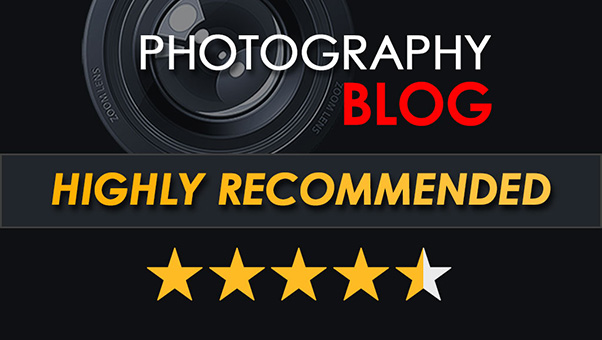
0 Response to "5ps Continuous Photo Example 5fps Continuous Photo Example"
Post a Comment